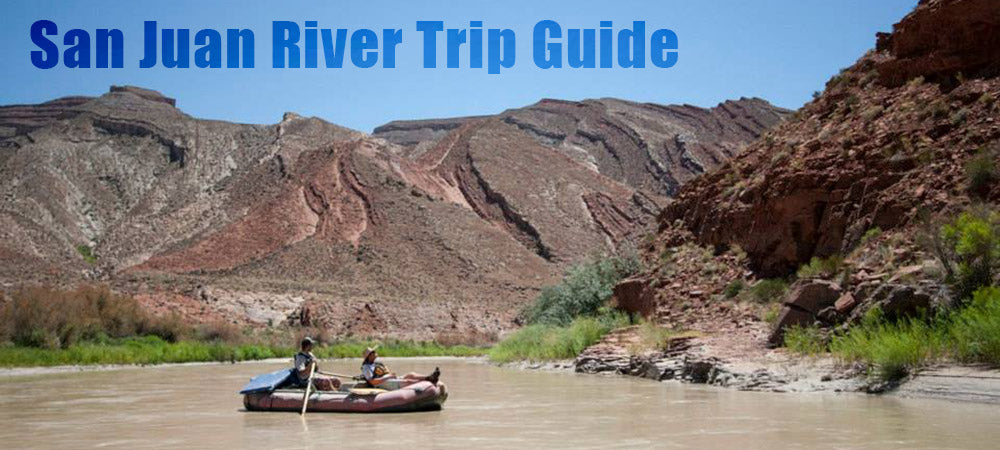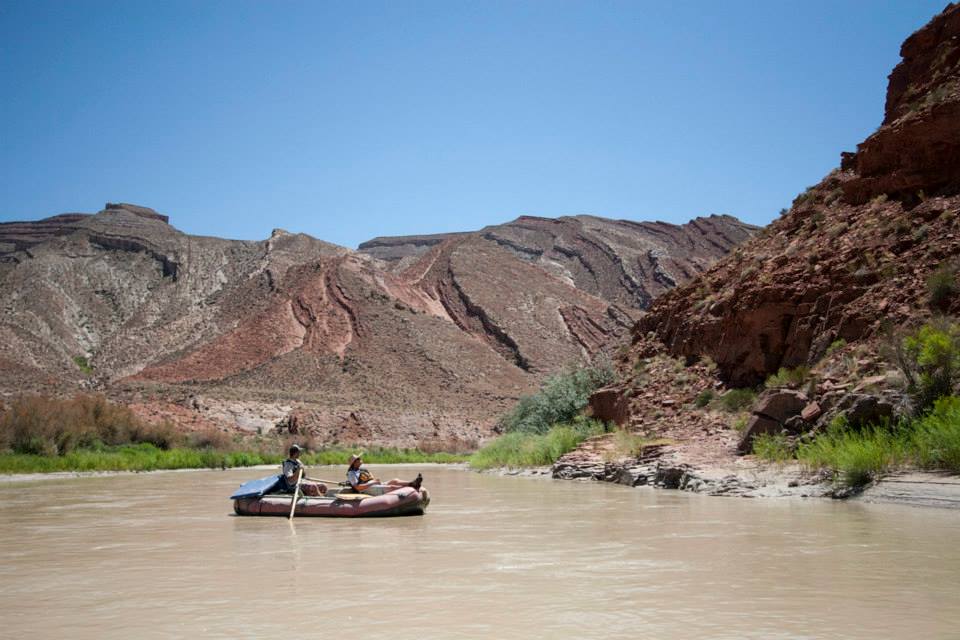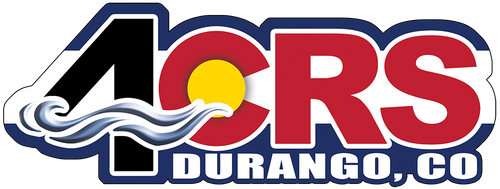
San Juan River Raft Rentals & Trip Guide
Matt Gerhardt
CLICK HERE FOR RAFT RENTAL RATES
The lower San Juan River is one of the most classic desert multi-day river trips in the Western US, if not the world, thanks to its scenery, geology, archeology and ease of logistics. People flock from all over the world to soak in the majesty of the river as it flows from the San Juan mountains in Southern Colorado to its junction with the Colorado River (now buried under the waters of Reservoir Powell). The most popular stretch of the San Juan is the “Lower San Juan”, which runs from just outside of Bluff, UT to the final take-out at Clay Hills, UT and bisects areas of the Navajo Nation, Monument Valley and Bears Ears National Monument areas. In this guide, we will cover basic logistics, recommended on-river attractions, required equipment, available equipment and raft rentals, and other helpful info to make your San Juan river trip as memorable and worry-free as possible.
Permit:
The first step in planning a Lower San Juan trip is obtaining a launch permit via the Rec.gov San Juan River permit page. The permit lottery is run every year, with open applications from December 1st thru January 31st for the upcoming season. This is your best chance for obtaining the exact date that you want to launch. If you didn’t apply during the lottery, don’t fret, you can still apply for cancellations at any point in time during the year. Simply check for available launch dates, fill out the application and submit! Lottery winners will be notified via email shortly after the lottery ends. Cancellations are first-come first-serve, and you will automatically win the permit once you’ve paid for it.
During the application, you will also need to choose your put-in and take-out locations, which will also dictate your trip length. The shortest and easiest trip is the 27-mile top section from Sand Island (Bluff) to Mexican Hat, which is usually done as a 2 or 3 day trip and has a very easy shuttle. The 50-mile lower section goes from Mexican Hat to Clay Hills and is usually done as a 4-5 day trip, with a more difficult shuttle. Groups can also choose to do both sections congruently (as long as permits are available), and is usually done is 6-8 days. The top section is best for first-timers or those looking to do an easy weekend trip.

Both sections are great for beginners and families, with mostly Class I-II rapids and only a couple easy Class III rapids. The river bed is mostly sand with ample flatwater stretches between the drops, making it very kid and/or paddleboard friendly. The upper section is easily done year round (barring ice dams mid-winter). The lower section is better with more water than base flow (1,000cfs or more is best, but can be done much lower).
Groups planning on hiking or camping on the river left side will need to apply for a Navajo Nation hiking or camping permit. These permits are issued per person, per day, and it is recommended you submit for your Navajo permits 6 weeks or more in advance of your trip. These permits are pesky given that you need a permit for every person for each specific day you plan on stopping on the left side of the river, but it is better than being issued a citation for trespassing on a sovereign nation. It is completely possible to do the trip without stopping on the left side of the river, but you are also missing out on some of the better archeological attractions like Desecration Panel and the Chinle Wash area.
Planning:
So you’ve scored a permit; great! Now comes the hard part. Planning is often the most time consuming and frustrating part of any river trip. Making sure that you have enough gear, food and logistical planning for your entire party (as many as you applied for on your permit up to 25 max) is a daunting task, and would be too much to fully cover in one article, so we will simply touch on the basics. For more in-depth river trip planning, see our River Trip Planning Guide (coming soon) or do a quick Google search on the topic. Using a Google Spreadsheet is an easy way to coordinate gear, trip expenses and logistics between your group.

For gear, you will need enough boats to fit all your gear and people. We offer full expedition raft rental packages in multiple sizes that come with frame & oars, cooler, drybox, camp table and all rigging & repair material necessary for your trip. In general, 14′ or 16′ expedition boats are best and will fit 3-5 adults depending on how much gear and beer you bring along. You can find more info on raft and equipment rentals for your San Juan River Trip on our Rentals Page.
You will want to check the River Use Stipulations to make sure that you have all required gear, including first aid, repair kits, fire pan, approved toilet system, and other required equipment.

Another helpful planning / packing guide is our River Trip Checklist, which will give each member of the group an idea of what they should bring on the trip. Make sure that you have enough group gear for you camp / kitchen. Plan on bringing all your drinking water, as the silty water is nearly impossible to filter. Plan on approx. 1 gallon per person per day in the summer. For shoulder and off season trips, you can often get away with 3/4 gallon per person per day. If all else fails, there is always “water in beer”, as they say. Plan on easy meals for breakfast and lunch, allowing more time for hiking and sightseeing. Dutch ovens are often great ways to cook big meals without a big production.
Remember, thorough planning is truly the key to a good trip, so spend ample time planning out logistics, gear, meals and make sure that all of your trip members are informed and on the same page.
Executing:

You’ve spent days, weeks, months of planning and now your launch date is here! Time to get on the water!
Keep in mind that there are few amenities in Bluff or Mexican Hat or anywhere nearby, so be sure to plan ahead and get any last minute gear / food / alcohol before you hit the road. Bluff is your best bet for last minute items. There is good camping at the put-in (pay spots) or nearby (Comb Wash and Valley of the Gods are great areas to camp). There is also free potable water at Sand Island, but we recommend calling ahead to make sure the spigots are currently working. For shuttle services, we recommend Valles Trading Post in Mexican Hat (435-683-2226). You can also pay a small fee to leave your vehicle at Valles to avoid break-ins at the notoriously sketchy Mexican Hat Boat Ramp. It is an easy walk from the takeout up the hill to Valles.
Once you have your shuttle dealt with, you’ll need to check in with the River Ranger at the put-in. They will want to see all your required equipment, so make sure not to pack said gear away before you checkout. The ranger will give you important and current details about river conditions, camps and archeological sites. They are also there to answer any last minute questions you may have. This is also a great time to chat with other groups about potential camps and will help avoid conflicts or tension.

If you’re putting on at Sand Island, we would highly recommend stopping at the Butler Wash Art Panel, Desecration Panel, and River House Ruins on your first day. Camping in the Comb Ridge / Lime Ridge area is the best for your first day. The second day, you will find yourself deep in the upper canyon, where there are fun little surf waves and plenty of scenery. Eight Foot Rapid is the only rapid to watch for in this section. Ledges or Fossil Stop are good camps in this zone.
If putting on at Mexican Hat, you start off with a Gypsum Creek, a small class two rapid. Almost instantly you are pushed into the canyon, with the red walls growing rapidly out of the water. The first day is fairly mellow with mostly flat water. There are several camps from a mere seven miles down to fifteen miles down if you are looking for a longer day. Day two you’re looking at two rapids, Twin Canyons Rapid and Ross Rapid, both have incredible camps below with side canyon hikes available. By the third day you are deep in the canyon, listening to Canyon Wrens and watching baby Big Horn Goats frolicking with their siblings. The camp to have on this day is John’s canyon. This camp offers a short hike up to a swimming hole called John’s hole where you can jump anywhere from a five foot cliff to a twenty foot cliff into the murky water. Day four brings government rapid (the most technical rapid) and lots of flat water. The best camps on this day are the Slick Horn camps, with more hikes to swimming holes offered by the canyon. By this time you have nearly reached the high-water level of Powell, so the last day comes with a big push through lots of flat water meandering your way through sand bars. It is recommended to break one long flat day into two days and camping at Oljeto Wash or Steer Gulch. The drive out may require a four wheel drive vehicle, so call Valles ahead of time to enquire about road conditions.
RESOURCES:
BLM River Office – (435) 587-1544
Notes: Permit applications due by Jan 31. Cancellation permits available year round.
Shuttle Info:
Shuttles from Sand Island to Mexican Hat take one hour, while shuttles from Sand Island to Clay Hills take 4-5 hours. Commercial outfitters provide the shuttles for a fee.
Shuttle Service Providers:
- Valle’s Trading Post (435) 683-2226 (trips taking-out at Mexican Hat only)
- Blackhawk Transportation (435) 678-3224 (trips taking-out at Clay Hills)
- Val’s San Juan Shuttles – (435) 669-3592
- Wild Expeditions – (435) 672-2244

Other sections of the San Juan:
San Juan Quality Waters: this incredible piece of trout fishing waters is some of the most sought after in the entire country. The first 5 miles below Navajo Dam, NM are packed full of Rainbow, Cutthroat and Brown Trout. Despite its short length, its easy to spend an entire day here floating and fly fishing the calm waters of the San Juan Quality Waters. Our AIRE Super Puma Fishing Raft Rental is the perfect craft for a day on the Quality Waters. Our Canoe or Inflatable Kayak Rentals work well on this section also. The most popular stretch is from Texas Hole to Crusher Hole, which is 4.5 miles. You can also extend the trip an additional 1.5 miles down just past the “Aztec Bridge” at Browns Corner.
Mesa Canyon: This often overlooked gem of a run is located just downstream of Pagosa Springs, CO and runs through 13 miles of picturesque canyons and farmlands, with easy and entertaining Class II-III whitewater. This is a great run for aspiring rafters to cut their teeth with some very manageable rapids at moderate flows. At high flows, experienced whitewater kayakers will have a blast here with lots of on-the-fly surf waves, while rafters will have a fairly continuous barrage of fast corners and big wave trains. The put-in is behind the Malt Shoppe, and the takeout is on Trujillo Road where there is an obvious takeout right next to the road. This is the only public access on the stretch, and there is no stopping allowed, except at one designated spot about half-way thru the run on some private land that has been generously opened to day use as a stopping area. Please be respectful here, or it may go away. Our AIRE Super Puma, Tributary 12′ or 14′ Raft Rentals are the perfect boats for this stretch. Consider an Inflatable Kayak Rental if you’re looking for more excitement, and the water levels are on the medium or low side.
